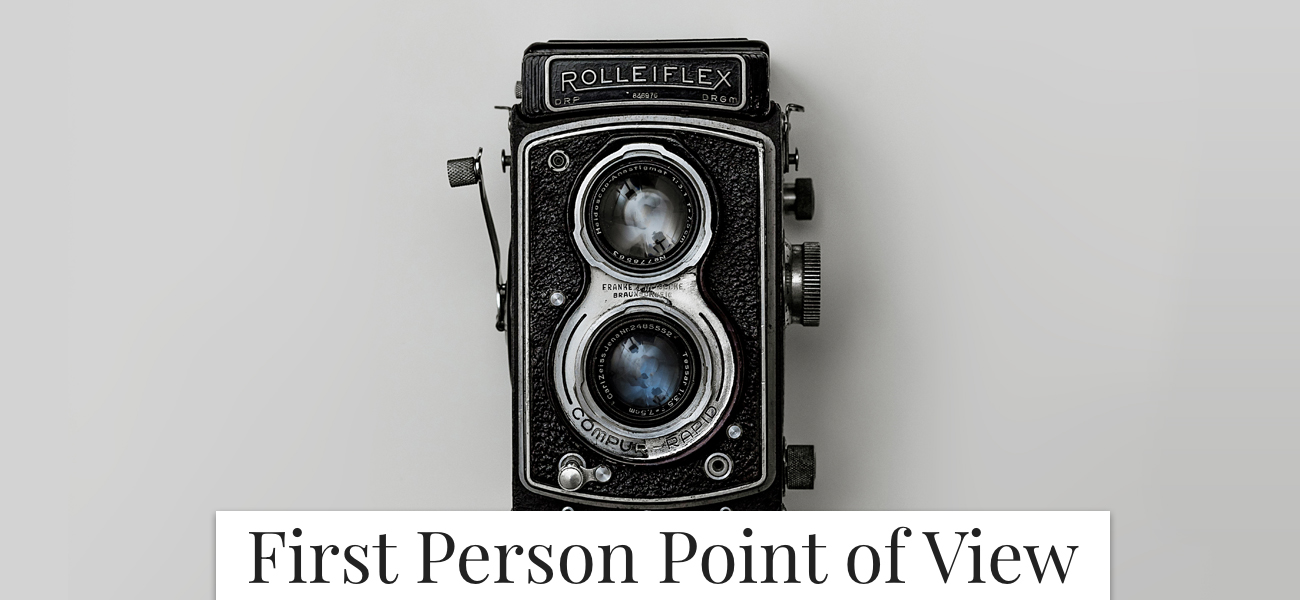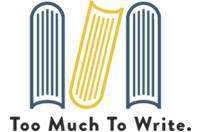
15 Feb Definitive First Person Point of View Guide
First Person Point of View
There are so many elements that go into writing and completing a book.
Some people think that best-selling authors have the easiest job in the world just by typing words in blank pages when in reality, there are more head-scratching, endless-pacing, and crumpled drafts involved than the actual writing process.
One of the most common dilemmas of book-writing is determining the POV or point of view. It refers to the whole perspective from which a story is told, which is CRUCIAL for any fiction or nonfiction book.
POV influences every aspect of a story, from tone, dynamics, down to every word choice.
THERE ARE SEVERAL KINDS OF POVs TO CHOOSE FROM, WHICH INCLUDES:
- 1st-Person POV
- 3rd-Person POV
- Omniscient POV
- Multiples POVs
However, let’s talk about the first person point of view and the how’s and what’s surrounding the topic. We know that many young authors are struggling with how to do the first-person narrative, so we created this article to breakdown the fundamental aspects of how to do it right!
WHAT IS FIRST PERSON POINT OF VIEW?
If the fictional narrator or the writer’s primary pronoun is I and We, it’s most likely that you’re dealing with a story written from the first person point of view.
First-person POV relates information from their perspective. It’s the most well-known type of viewpoint when writing a story, but it’s also one of the trickiest POV‘s to get right, especially in fiction writing.
In nonfiction, however, the first person point of view is the most popular writing approach, especially in memoirs and autobiographies.
It’s because readers can experience and relieve the story through a primary source, giving the writer credibility. Meaning, the writer knows what he or she is talking about, so readers are safe in the knowledge that the story is true.
TYPES OF FIRST PERSON POINT OF VIEW
There are two types of the first person point of view in writing. You can determine which kind of voice to use depending on the elements of the story, like what genre it is, or the main role of the narrator.
#1 – First Person Point of View Central
Using first-person central means that the narrator is also the main character at the heart of the story. One good example of this is the novel Alias Grace by Margaret Atwood.
The story is about a double murder that happened in 1843, where a servant got a death sentence for the murder of his boss. The narrator of the story is Grace Marks, and the novel is written by using Grace‘s point of view.
Grace Marks is a maid who was also convicted as an accessory to the crime. The novel mostly revolves around Grace talking to the man hired to acquit her of the charges.
#2 – First-person peripheral
First-person peripheral is where the narrator is not the main character, but rather a witness to the main story.
A popular example is The Great Gatsby by F. Scott Fitzgerald. The main protagonist of the novel is Jay Gatsby, but the narrative of the whole story is told through Nick’s perspective.
Writing a story this way creates a mystery to the main protagonist but still keeping him or her as the main focus of the whole plot. Writing in first-person peripheral means that the readers can only perceive the main character through a distance, where they cannot know the protagonist’s own feelings or thoughts.
In the novel, Nick narrates the story and describes Gatsby based only on his own experience and encounters with him, making Gatsby an enigmatic character. This is one of my favorite types of first person point of view.
ADVANTAGES OF WRITING IN FIRST PERSON POINT OF VIEW
#1 – It creates intimacy between the character and the reader
The feeling of closeness between the main character and the reader is one of the reasons why more authors prefer writing from the first person point of view.
More readers love a book where they can get an immersive experience by getting more rooted in the story universe and becoming the character itself.
First person point of view is the only POV that can offer this level of intimacy, as the reader has access to the main character’s thoughts and feelings. Keep this in mind when you are deciding on what point of view to use for your novel. It’s ridiculously important to figure that out before you are knee-deep in ten thousand plus words and need to change the POV.
#2 – It’s more uncomplicated for first-time authors
According to Aja Pollock, an esteemed editor who has worked on books by writers like George W. Bush, Neil Gaiman, etc., first-time authors have an easier time writing in first-person POV than third-person.
“This makes sense since it echoes the way we tell stories in real life. By its very nature, first-person basically eliminates the problem of ‘head-hopping,’ which often shows up in the work of writers who use third-person.” – Aja Pollock
#3 – It creates a sense of intrigue
Because the first person point of view lets the reader experience only what the narrator knows and feels, it limits their access to other information. This is an effective way of building intrigue and creating suspense in novels and stories, such as mysteries or thrillers.
For example, in some of Sir Arthur Conan Doyle‘s Sherlock Holmes mysteries, Sherlock Holmes is the main protagonist, but John Watson is the narrator.
The story is written in the first-person peripheral, and the readers can only perceive Holmes through the eyes of John Watson. Keeping the protagonist at a distance makes him more mysterious and exciting, and it also lets the readers feel just as excited as Watson whenever Holmes cracks a case.
You can start to see how useful that type of fist person device can be for storytellers?
CONS OF WRITING IN FIRST PERSON POINT OF VIEW
#1 – The extent of knowledge and perspective is limited
Some of the most common mistakes that writers make when they’re writing from a first person point of view is that they sometimes discuss and write about the interior life of a secondary character.
Since the perspective of the whole story revolves around the personal experiences of the main character or the narrator, it is impossible to reflect knowledge or describe information beyond the scope of what the main character would know.
This creates a sort of limitation to the whole story, but a talented writer can work around this roadblock. If the first person POV wants to discuss the thoughts and feelings of another character, he or she can always describe what other secondary characters are thinking or feeling with small observations.
Let’s look at an example
“Shiela was shocked when she arrived at the scene.”
The first person narrator can’t guarantee what Sheila is feeling. But to portray the same thought, you might want to write:
“Shiela looked shocked when she arrived at the scene.”
This way, you can convey the same idea to the reader without portraying the first-person narrator as a mind reader. (Unless, of course, the first person POV is literally psychic. Then the first example would be neat structurally device that readers will appreciate)
#2 – First-person limited point of view is sometimes mistaken as first-person omniscient point of view
The first-person omniscient point of view is actually very different from the limited first person point of view. In the latter, the perspective or the aspect of the whole story is restricted to one character, while the former is actually a whole other thing.
Although first-person omniscient still uses first-person pronouns such as “I,” an omniscient narrator suggests that the story is told by a single character who has access and can accurately describe the motivations, actions, feelings, and thoughts of all the characters in the story. It is very unrealistic in most novels or stories, as no person can possibly know the feelings and thoughts of the other people surrounding him or her. However, you can write a story revolving around the fact that the first person omniscient is needed and relevant. The most famous example of this instance is the novel The Book Thief by Markus Zusack, where the narrator Death is a first-person omniscient.
TIPS AND TRICKS IN WRITING FIRST PERSON POINT OF VIEW
Here are some effective and helpful guidelines to help you write in first person point of view:
#1 – Pick and stick with your chosen tense
If you have finally decided on writing your novel or story in first person point of view, the second thing to do is to pick the right tense.
Generally, you can choose between the present and past tense. Future tense can be an option, but it’s kind of tricky to get right. If you’re just starting out as an author, it might be difficult for you to stick with it.
Using present tense in first-person narration is a popular choice for many authors, and is very common in young adult fiction novels.
It grants a sense of urgency and immediateness to any book, which is most compatible with stories that have high stakes and lots of action.
However, you can also combine the first person point of view narrative and past tense. With this type of writing flow, it allows readers to immerse themselves in a more storytelling feel. It’s because the narrator is mostly giving an account of events that happened in the past from their own point of view.
Just remember to stick with whichever tense you choose once you start writing.
#2 – Avoid repetitive descriptions
When writing in the first person point of view, try to mix and match the way your narrator expresses his or her thoughts, experiences, and feelings.
This is one of the rookie mistakes many young authors make.
Avoid repetitive descriptions, such as:
“I felt disturbed by the creaky sound that came within my parents’ room. I felt more anxious still when I tried to open the door, and it was locked.”
In this scenario, you want your reader to be at one with the character, and using “I felt” too much is distracting. Try using other articles and word choices such as “my,” “a,” or “the.
The example above can be rewritten as:
“My tension grew as I noticed a creaky sound coming from within my parents’ room. An immediate fear came over me when I tried opening the door and found it locked.”
Varying your first-person narrator‘s self-expression is crucial because it applies the sense that your character is real. It also helps the reader stay focused on your unfolding story rather than be distracted by your repetitive word choices.
#3 – Show what the character is feeling
Since everything in your story comes from a first-person narrative, you don’t need to explain the main character’s thoughts and feelings by qualifying them with an “I thought” tag or placing them in italics.
Here is an example of explaining character’s thoughts:
“My heart feels like bursting with joy. Is it finally over? I think to myself. Maybe I’m dreaming.”
Writing your story like that makes everything feel very redundant. The very nature of the first person point of view is that the reader knows who is thinking those thoughts without that extra clarification. It should be written as:
“I couldn’t contain myself with happiness. Is it finally over? Maybe I’m dreaming.”
#4 – Avoid bland narratives
Writing in the first person point of view can sometimes make you feel that you have to narrate what the main character is thinking about all the time. Be aware that this unnecessary and lengthy narrative can turn out to be a bland and boring straightforward telling of events when you can develop your character’s voice to be strong and distinct in any dialogue.
Here is an example of bland narrative:
“”Why are you being quiet?” Mom asked. I pursed my lips. Mom suddenly paying attention to me just now is kind of ironic. If only she knew what I had to go through the last couple of days.”
Help your readers connect with your main character by the way you tell their first-person narrative. Inject some distinct essence and personality into the dialogues and avoid long narrative rabbit holes.
The above example can be rewritten as:
“”Why are you being quiet?” Mom asked. I pursed my lips, turned around, and said, “What’s with all the questions Mom? It’s funny how you suddenly paid attention to me today. Don’t you know what I’ve been dealing with the last couple of days?””
We hope this shed some light on the world of the first-person narrative! Writing a story from the first person point of view is exciting, and it helps your readers to be connected and knee-deep in your book, and that’s exactly where you want them to be!
Just avoid some of the common mistakes we mentioned, and you’re good to go! Do you have any first-person POV tips to share? Tell us in the comments below!
























